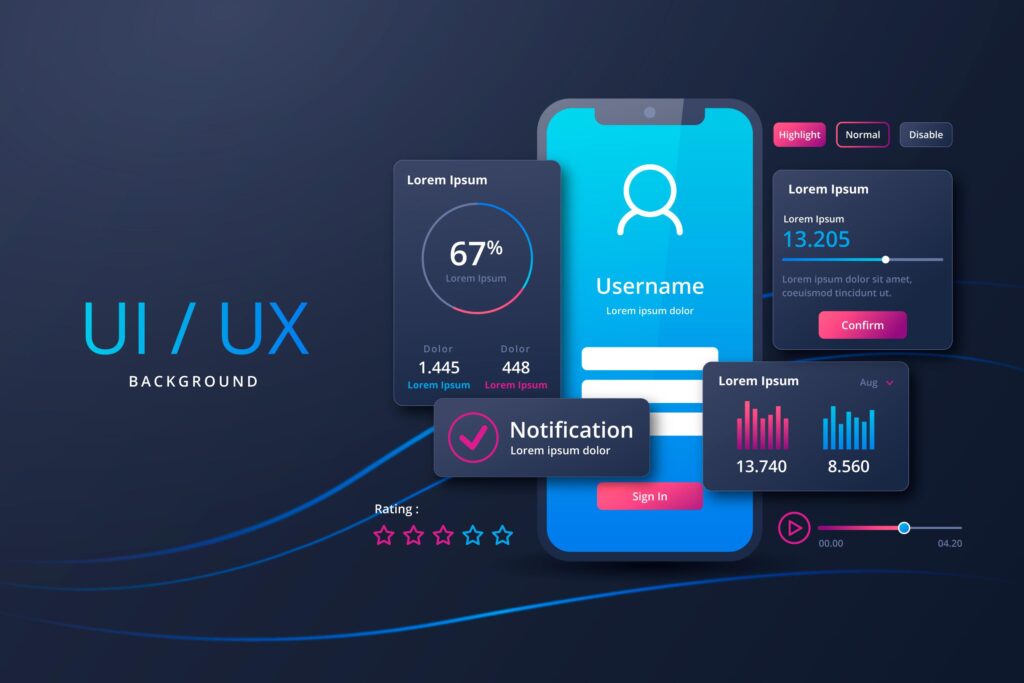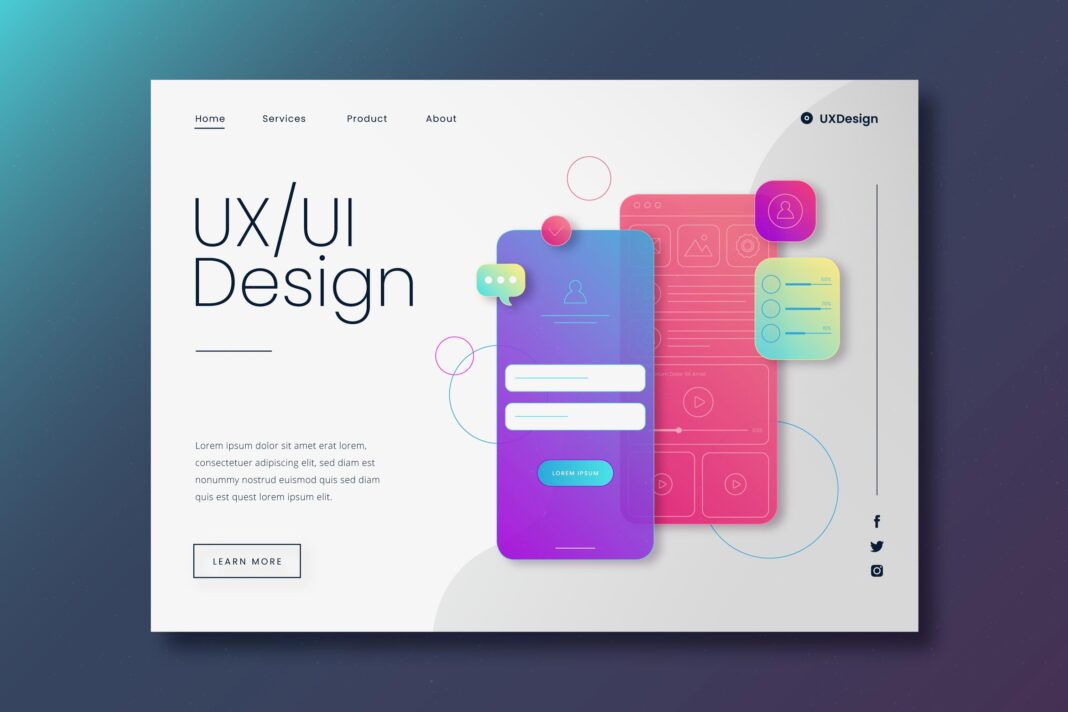User Interface (UI) and User Experience (UX) design are critical components of digital product success. As technology evolves, so do user expectations. By 2025, businesses that fail to adopt modern UI/UX best practices risk losing engagement, conversions, and customer loyalty.

This guide provides an in-depth exploration of the most effective UI/UX design strategies for 2025, ensuring your digital products remain competitive, user-friendly, and future-proof. We’ll cover accessibility, minimalism, voice interfaces, mobile-first design, AI personalization, emotional design, cross-platform consistency, performance optimization, usability testing, and emerging trends—each explained in detail with real-world examples and actionable insights.
1. Prioritizing Accessibility in UI/UX Design
Why Accessibility Matters
Accessibility ensures that digital products are usable by everyone, including people with disabilities. With over 1 billion people worldwide living with some form of disability, ignoring accessibility means excluding a significant portion of potential users. Additionally, legal requirements such as the Americans with Disabilities Act (ADA) and Web Content Accessibility Guidelines (WCAG 2.1) make accessibility a compliance necessity.
Key Accessibility Practices for 2025
1.1 Color Contrast & Readability
- Minimum contrast ratio: Text should have a contrast ratio of at least 4.5:1 against its background.
- Avoid color-only indicators: Use icons or text labels alongside color to convey information (e.g., error messages should include text, not just red highlights).
- Test with color blindness simulators: Tools like Color Oracle help designers see how their work appears to users with color vision deficiencies.
1.2 Keyboard Navigation & Focus States
- All interactive elements must be keyboard-accessible: Users should be able to navigate forms, buttons, and menus using only the Tab key.
- Visible focus indicators: Highlight selected elements (e.g., buttons, links) so keyboard users know where they are on the page.
1.3 Screen Reader Compatibility
- Semantic HTML: Properly structured headings (
<h1>to<h6>), lists (<ul>,<ol>), and landmarks (<nav>,<main>) improve screen reader navigation. - ARIA (Accessible Rich Internet Applications) labels: Provide additional context for dynamic content (e.g., live updates, modal dialogs).
1.4 Alternative Text for Media
- Descriptive alt text for images: Screen readers rely on alt attributes to describe visuals.
- Transcripts for audio/video content: Ensure multimedia is accessible to deaf or hard-of-hearing users.
Real-World Example: Apple’s Accessibility Features
Apple leads in accessibility with features like:
- VoiceOver (screen reader)
- Dynamic Type (adjustable text sizes)
- Switch Control (for motor-impaired users)
By following these practices, designers can create inclusive experiences that cater to all users.
2. Embracing Minimalist & Functional Design
The Power of Minimalism in UI/UX
Minimalist design removes unnecessary elements, reducing cognitive load and improving usability. Google’s Material Design and Apple’s Human Interface Guidelines emphasize simplicity, clarity, and purpose-driven layouts.
Key Principles of Minimalist Design
2.1 Whitespace Optimization
- Improves readability: Proper spacing prevents visual clutter.
- Guides user attention: Strategic whitespace directs focus to key elements (e.g., call-to-action buttons).
2.2 Simplified Navigation
- Hamburger menus for mobile: Save space while keeping navigation accessible.
- Breadcrumb trails: Help users track their location within a website (e.g., Home > Products > Smartphones).
2.3 Micro-Interactions for Engagement
- Subtle animations: Button hover effects, loading spinners, and swipe gestures enhance interactivity.
- Feedback on user actions: Confirmation messages (e.g., “Item added to cart”) reassure users.
Case Study: Dropbox’s Redesign
Dropbox shifted from a cluttered interface to a clean, minimalist design, resulting in:
- 30% increase in user engagement
- Faster task completion rates
3. Optimizing for Voice User Interfaces (VUIs)
The Rise of Voice Search & Assistants
With 50% of U.S. adults using voice assistants daily (Statista, 2023), designing for voice interactions is essential.
Best Practices for VUI Design
3.1 Natural Language Processing (NLP) Integration
- Understand varied speech patterns: Account for accents, slang, and incomplete sentences.
- Context-aware responses: If a user asks, “What’s the weather?” followed by “What about tomorrow?”, the system should recognize the follow-up query.
3.2 Multimodal Experiences
- Combine voice with visuals: Smart displays (e.g., Google Nest Hub) provide both spoken and screen-based feedback.
- Fallback options: If voice recognition fails, offer touch or text input alternatives.
3.3 Error Handling in Voice Commands
- Clear recovery prompts: Instead of “Command not recognized,” say, “Sorry, I didn’t catch that. Could you repeat or rephrase?”
Example: Domino’s Pizza Voice Ordering
Domino’s allows customers to order pizza via Alexa or Google Assistant, streamlining the process for busy users.
4. Mobile-First Design Strategies
Why Mobile-First is Non-Negotiable
- Mobile accounts for 60% of web traffic (GSMA, 2024).
- Google’s mobile-first indexing prioritizes mobile-friendly sites in search rankings.
Key Mobile-First Techniques
4.1 Thumb-Friendly Navigation
- Place key actions at the bottom: Easily reachable with one-handed use.
- Larger touch targets: Buttons should be at least 48×48 pixels for better tap accuracy.
4.2 Accelerated Mobile Pages (AMP)
- Faster loading: Stripped-down HTML versions improve speed.
- Higher SEO rankings: Google favors AMP-optimized pages.
4.3 Offline Functionality
- Progressive Web Apps (PWAs): Allow users to access content without internet (e.g., Twitter Lite).
Stat:
A 1-second delay in mobile load time can reduce conversions by 20% (Google, 2024).

